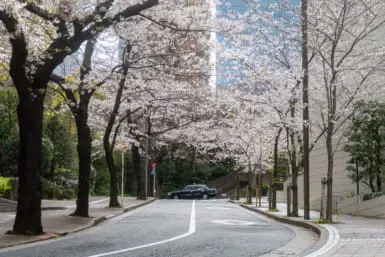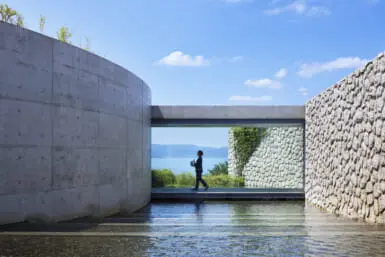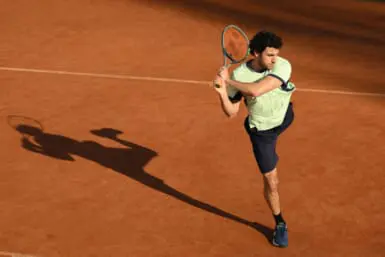Exploring Japan’s Finest Winter Sports Venues
by Benjamin Freeland
While foreign residents in Japan often tire of their hosts all-too-frequent eulogizing over their country’s four distinct seasons, there is no denying that Antonio Vivaldi would have had a field day here. Blessed with a vast latitudinal spread and stunning geographical diversity, Japan begins in the subtropics and curves northwards towards Siberia, covering all climates in between, from sweltering summer heat to biting winter cold, with sublime springs and falls thrown in for good measure. It is therefore hardly surprising that the Japanese are a people with catholic tastes in sports and recreation. Few countries can boast both world-class surfing beaches and ski slopes as Japan can, and in contrast to a great many countries, Japan generally performs about equally well in the Winter and Summer Olympics, and is among only six nations to have hosted both events. In recent years, thanks in no small part to its successful hosting of the 1972 and 1998 Winter Olympics (in Sapporo and Nagano respectively), Japan has gained a well-deserved reputation for superb ski resorts and other winter sports facilities. Moreover, Japan’s ubiquitous onsen (hot springs), are rarely more than a snowball’s throw away and providing the perfect cap to a day on the slopes; a treat that few other countries can match.
Given that approximately 75 percent of Japan is covered with mountains, it’s hardly surprising that the country is full of options for powder fanatics. While Japan features some 600 ski and snowboarding resorts, it is Hokkaido and the Central Alps region that represent the country’s two primary ski destinations.
Thanks to its relatively recent hosting of the 1998 Winter Olympics, Nagano Prefecture, with it’s golden trio of Hakuba, Shiga Kogen and Nozawa Onsen, has come to be synonymous with skiing and snowboarding. Hakuba, which rose to prominence as the downhill skiing venue for the 1998 Olympics, is probably Japan’s best-known winter sports venue.Hakuba 47 Winter Sports Park, the town’s centerpiece, offers 23 pistes covering all levels, as well as snowshoe and snowmobile tours, and private ski and snowboard lessons available in either English or Japanese. Nozawa Onsen, which hosted the biathlon in 1998, is a close rival, featuring some of the country’s most demanding slopes and even offering year-round skiing, made possible by plastic mats at Yamabiko Sports Park. While somewhat less known than the aforementioned pair, Shiga Kogen, located south of Nozawa, offers some of the most diverse ski terrain in the country and boasts one of the country’s longest ski seasons, lasting from December to May. Rounding out central Japan’s top tier are Minakami (Gunma), home to some 16 ski resorts, and Yuzawa (Niigata), best known as the bucolic setting of Yasunari Kawabata’s classic novel Snow Country, which counts some 20 resorts within its vicinity.
While the Central Alps are hard to beat in terms of mountain scenery and snowfall, no region of Japan is more synonymous with winter than Hokkaido, and thanks to Sapporo’s hosting of the 1972 Winter Games, the northern island’s ski resorts have been drawing large crowds longer than places like Hakuba. While Hokkaido’s erstwhile Olympic downhill ski venue at Mt. Eniwa is now closed due to volcanic activity, the island has no shortage of world class resorts, of which the two best known are the pair: Niseko and Furano. Furano which is located due south of Daisetsuzan National Park in central Hokkaido and famous for its lavender fields during the summer months, features some 24 slopes and also offers snowshoe hiking through its spectacular mountain scenery. Better known, however, is the southwestern Niseko region, which encircles the spectacular Mt. Annupuri and features three major resorts, Grand Hirafu, Higashiyama and Niseko Annupuri. The Niseko All-Mountain Pass provides visitors with access to all three resorts. A true winter sport Mecca, Niseko provides a wide range of alternatives for those averse to hurtling down steep powdery slopes, including Nordic skiing, snowmobiling, snow rafting, ice climbing, snowshoeing and, of course, the obligatory onsen soak. Hokkaido’s ski season generally runs from December to March.
For those more interested in indoor winter sports, Japan’s cities have no shortage of skating rinks, and skating has indeed become something of a national obsession since Shizuka Arakawa’s stunning gold medal performance at the 2006 Winter Olympics in Turin. Among the Kanto region’s finest skating venues are the Shin-Yokohama Prince Hotel Skate Center, which serves as a practice venue for some of the country’s top figure skating talents, the Meiji Jingu Ice Skating Rink, a multi-purpose facility with a National Hockey League size rink suitable for ice hockey, figure skating and speed skating, and the Citizen Ice Skating Rink in Takadanobaba, a 60 by 30-meter rink designed with the same three sports in mind. All three of these facilities are open to the public when no tournaments or other special events are scheduled.
For those more interested in watching than participating, the Asia League of Ice Hockey features four Japanese teams (as well as two in South Korea and one in China) including the 13-time Japan League champion Seibu Prince Rabbits, whose home ice is at the DyDo Drinco Ice Arena in Higashi-Fushimi, Nishi-Tokyo.
While Japan has yet to reach the same standing as Switzerland, Colorado or British Columbia, its status as a winter sports powerhouse appears to be rising fast, both in terms of its popularity as a ski and snowboarding destination and the performance of its top athletes, from figure-skating prodigies Miki Ando and Mao Asada to pioneering ice hockey goalie Yutaka Fukufuji, Japan’s first NHL player. A temperate country par excellence, Japan has nevertheless long been Asia’s leading light in the world of winter sports, and its international profile as such, continues to rise.









